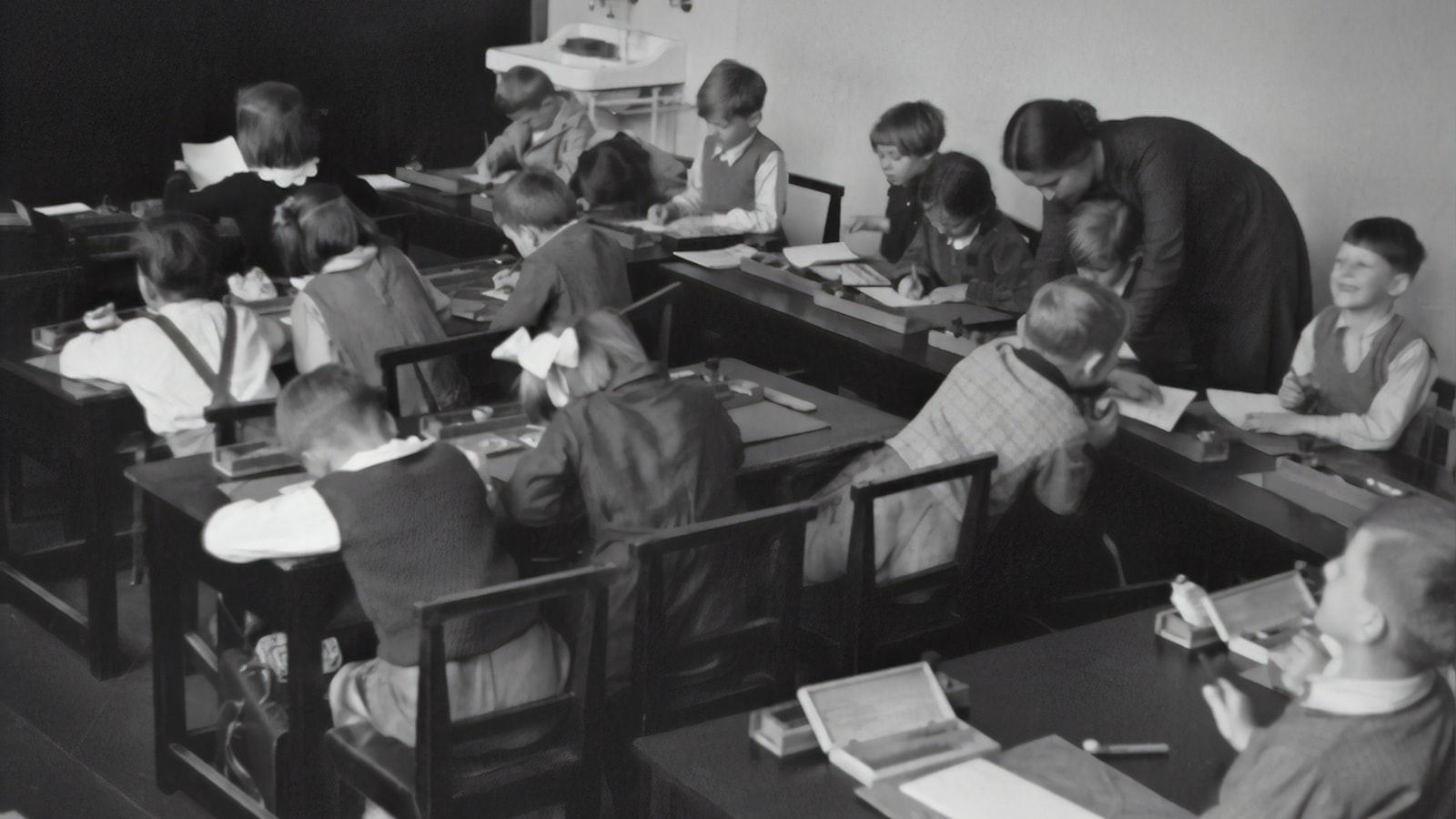Timeline of Transformation: Tracing UK’s Educational Odyssey

Charting a course through the rich tapestries of history, we find ourselves on an intriguing odyssey – a transformative quest into the heart of the United Kingdom’s educational evolution. With the touch of time’s delicate hand, the UK’s education system has seen perennial change, and like Janus, the god of beginnings, transitions and endings, this progression stands as a testament to human resilience. This article will serve as your compass, guiding you through centuries of milestones, shifts, triumphs, and trials which have effectively shaped the educational journey of the UK. We set sail amidst the waves of historical context, weaving our narrative around policy revisions, landmark reforms, and influential figures, crafting an intellectual map of the UK’s educational odyssey. Whether it’s the murmur of legislation shaping schools in the 19th century, or the echo of modern educational transformation, this grand narrative invites you to peel back the layers of history and explore the UK’s scholastic evolution.

Bridges and Barriers: The Focal Points in the UK’s Educational Journey
The historical path of the UK’s education system is a rich tapestry that blends innovative policies with recurring hurdles. Shifts in governmental attitudes, changes in societal norms, and the progression of civil liberties have all been pivotal influences in the sculpting of modern British education.
One early juncture of note occurred in the Victorian Age, where education became a distinct class divider. The Elementary Education Act of 1870, often known as Forster’s Education Act, spearheaded the drive for elementary education for all children. This was a gateway policy that gradually ushered in compulsory education.
Following the Victorian Age came the twentieth-century era, marked by two World Wars and a shifting global landscape. Despite these tumultuous times, progressive strides were made in the field of UK education. The Butler Act of 1944 made secondary education freely available to all. It wasn’t all smooth sailing, however; unpopular decisions such as the binary divide between technical and academic institutions incited controversy and impeded progress.
-
- The Education Act 1944 : Also known as the ‘Butler Act’, this established the tripartite system of grammar, secondary modern, and technical schools.
-
- The Education Reform Act 1988 : This introduced the National Curriculum, standardizing what children were taught, regardless of their location or type of school.
-
- The Education Act 1996 : This consolidated previous laws regarding education into a single statutory act.
| Year | Legislation | Impact on Education |
|---|---|---|
| 1870 | Elementary Education Act | Introduced elementary education for all children |
| 1944 | Butler Education Act | Made secondary education freely available |
| 1988 | Education Reform Act | Introduced a standardized National Curriculum |
| 1996 | Education Act | Consolidated previous education laws |
Through admirable tenacity and resilience, the UK has weathered this sometimes stormy educational odyssey. The country has formed its current educational landscape, shaping a strong infrastructure built upon the pillars of access, quality, and inclusivity. However, with the ever-increasing pace of global change, there is always more room for growth and improvement.
Readjusting the Sails: Major Shifts in British Education System Over the Ages
As we delve into the depths of the UK’s academic journey, it’s fascinating to see the remarkable progression from the rudimentary education models to the modernised ones. There was a time when education was a privilege for the elite, with monasteries and the royal court being the springboards for lessons. Furthermore, education was not gender-neutral, and the times were particularly challenging for women who were eager for an intellectual pursuit.
The 19th Century marked a paradigm shift. The introduction of compulsory education in 1880 was a milestone that resonated throughout the nation. Frequented by children between the ages of 5 and 10, these elementary schools became the first stepping stones in creating a literate society. Here is a summary of these remarkable transitions:
| Era | Societal Attitude Towards Education | Notable Transformation in the Educational System |
|---|---|---|
| 19th Century | Education became a public responsibility and compulsory for all children. | Establishment of elementary schools to foster literacy among the masses. |
| Modern Age | Education perceived as a basic right and necessity. | Greater inclusion, technological integration, and focus on holistic education. |
The canvas of the UK education system has been repainted time and again, each stroke representing progress, inclusivity and enlightenment. The transformations were not sporadic acts of change, but a culmination of efforts determined to readjust the sails of a system designed for a society that was continually evolving.

The Learning Nucleus: Understanding Fundamental Changes in UK’s Modern Education
In the early 1980s, a profound revolution took place in the British educational landscape, marking the start of the continuous evolution that continues today. The introduction of the National Curriculum in 1988 established a framework aiming to standardize the content taught across schools to ensure consistency and quality. The three core subjects, English, Math and Science, were emphasised, with students nationwide studying and facing evaluations based on the same standard. Supplementing the core triad, a wider curriculum was designed featuring History, Geography, Technology, Music, Art, and Physical Education.
| Year | Significant Change |
|---|---|
| 1988 | Introduction of National Curriculum |
| 1992 | Establishment of OFSTED |
| 2002 | Introduction of Literacy and Numeracy Strategies |
| 2010 | Shift towards Academies and Free Schools |
Stepping into the 21st century, the emergent digital age significantly impacted education. It paved the way for the increased integration of Information and Communication Technology (ICT) into the teaching and learning process. More recent reforms have provided schools with greater autonomy, notably through the Academies Act 2010, allowing schools to convert into academies and gain control over their curriculum, budgets and policies. Furthermore, the influence of globalization enabled students to gain a broader understanding of the world, with a growing focus on subjects such as citizenship and personal, social, health and economic education (PSHE).
The UK’s educational journey continues to be a testament to an increasingly comprehensive, inclusive and innovative learning nucleus, shaped by global trends and societal needs. The succeeding years will undoubtedly introduce fresh challenges and opportunities, reshaping education’s face in the quest for providing quality education for all.

Forward-Thinking Framework: Recommendations to Sustain the Evolution of Education in UK
Today’s dynamic technological environment calls for an education system that is constantly evolving and adapting. The UK has a storied history of continuously reshaping its education system, from the introduction of compulsory education in the late 19th century, to the advent of digital learning platforms in recent years. This transformative journey is an exemplar of forward-thinking frameworks that other nations can aspire to emulate.
One aspect of this evolution that merits attention is the concerted effort to bridge the digital divide that permeates the learning environment. This drive is reflected in initiatives such as:
-
- Governmental efforts to make internet access universal and affordable, facilitating remote learning.
-
- The national curriculum’s inclusion of computer science, aiming to equip students with necessary digital skills.
-
- Investment in educational technology, enabling distance learning and online resources.
The UK has also made strides in fostering inclusive education. Special education needs (SEN) provisions have undergone significant changes, transitioning from isolated settings to mainstream inclusion, aiming for all learners to benefit from each other’s shared experiences and unique challenges.
| Year | Key Educational Transformation |
|---|---|
| 1870 | Introduction of compulsory education |
| 1981 | Education Act defined SEN and mandated their integration in schools |
| 1992 | Further and Higher Education Act promoted adult education |
| 2014 | Children and Families Act focused on inclusive education |
Moving forward, it’s imperative that the UK continues to push the boundaries of educational possibilities. Just as past transformations have responded to shifting societal and technological landscapes, the future evolution of education must strategically anticipate and mitigate forthcoming challenges.
In Conclusion
And so, we’ve journeyed through the annals of time in the UK, tracing the ink-splattered pages of its educational odyssey. From the capacious halls of historical academia to the digital classrooms of tomorrow, we’ve charted a shifting landscape steeped in the quest for enlightenment. Educational pioneers, historic milestones, radical reforms, and futuristic visions—each providing its distinct hue in the rich tapestry of this evolutionary narrative. The future remains undiscovered territory, a blank canvas ripe for groundbreaking ideas and transformative potential. Remember, as we move forward, the timeline doesn’t end today; it is continually shaped by the strokes of innovation that we, as a society, bring forth in the realm of education. So, continue to question, to learn, and to evolve—because, in education, we find not only the evolution of a nation but also the promise of its future.



